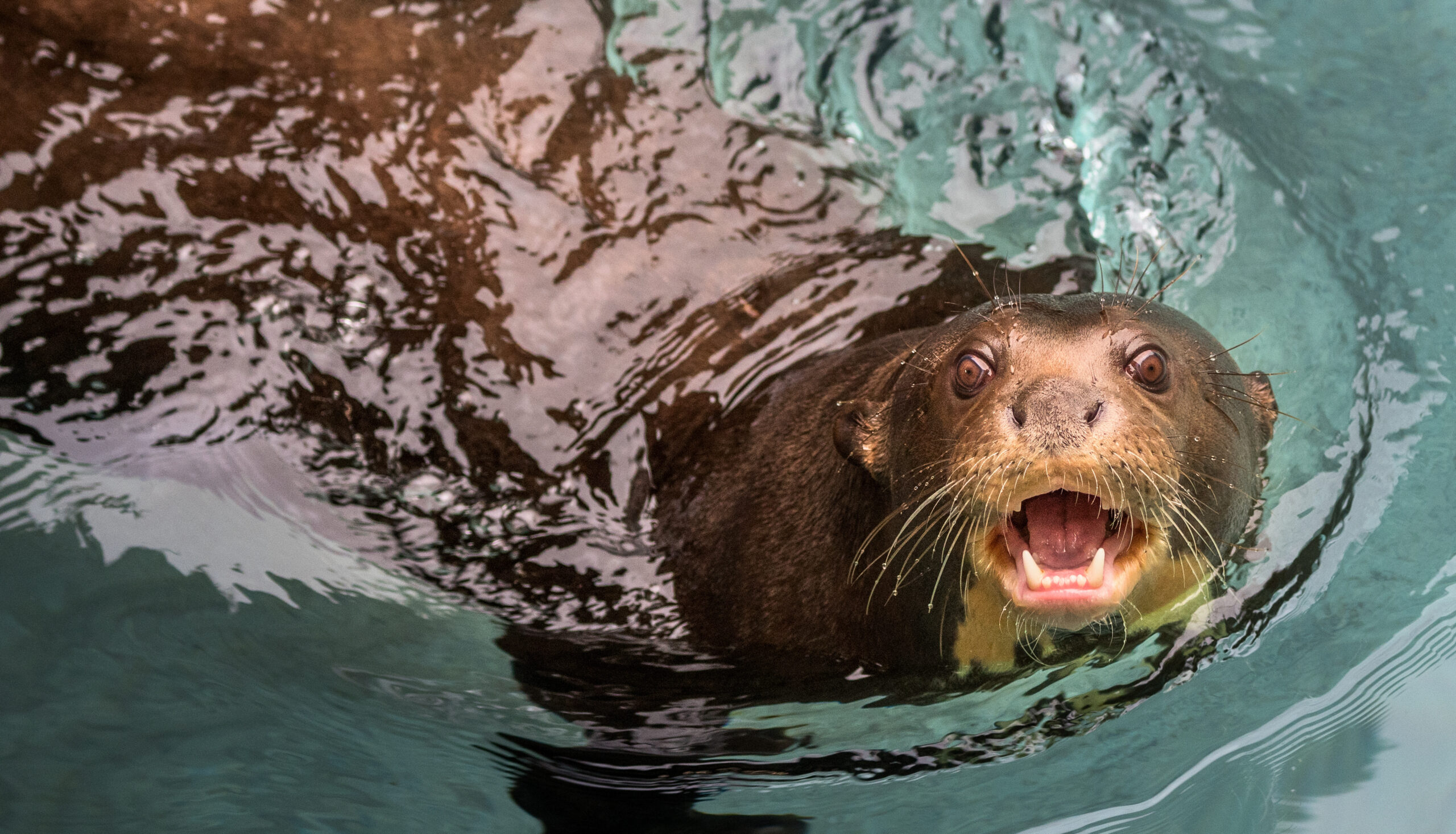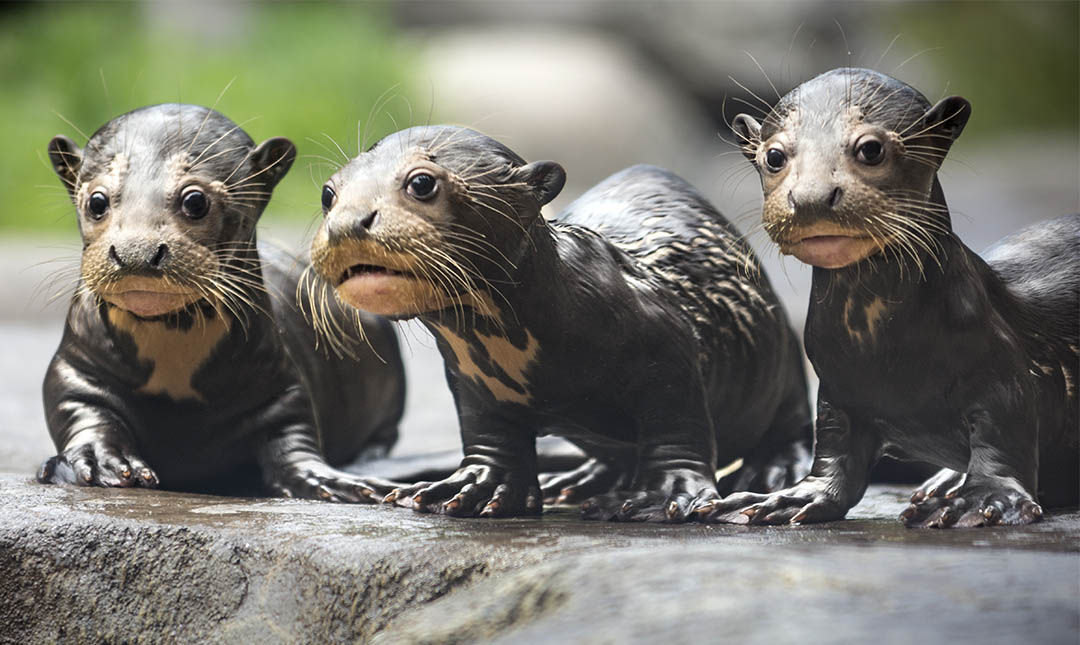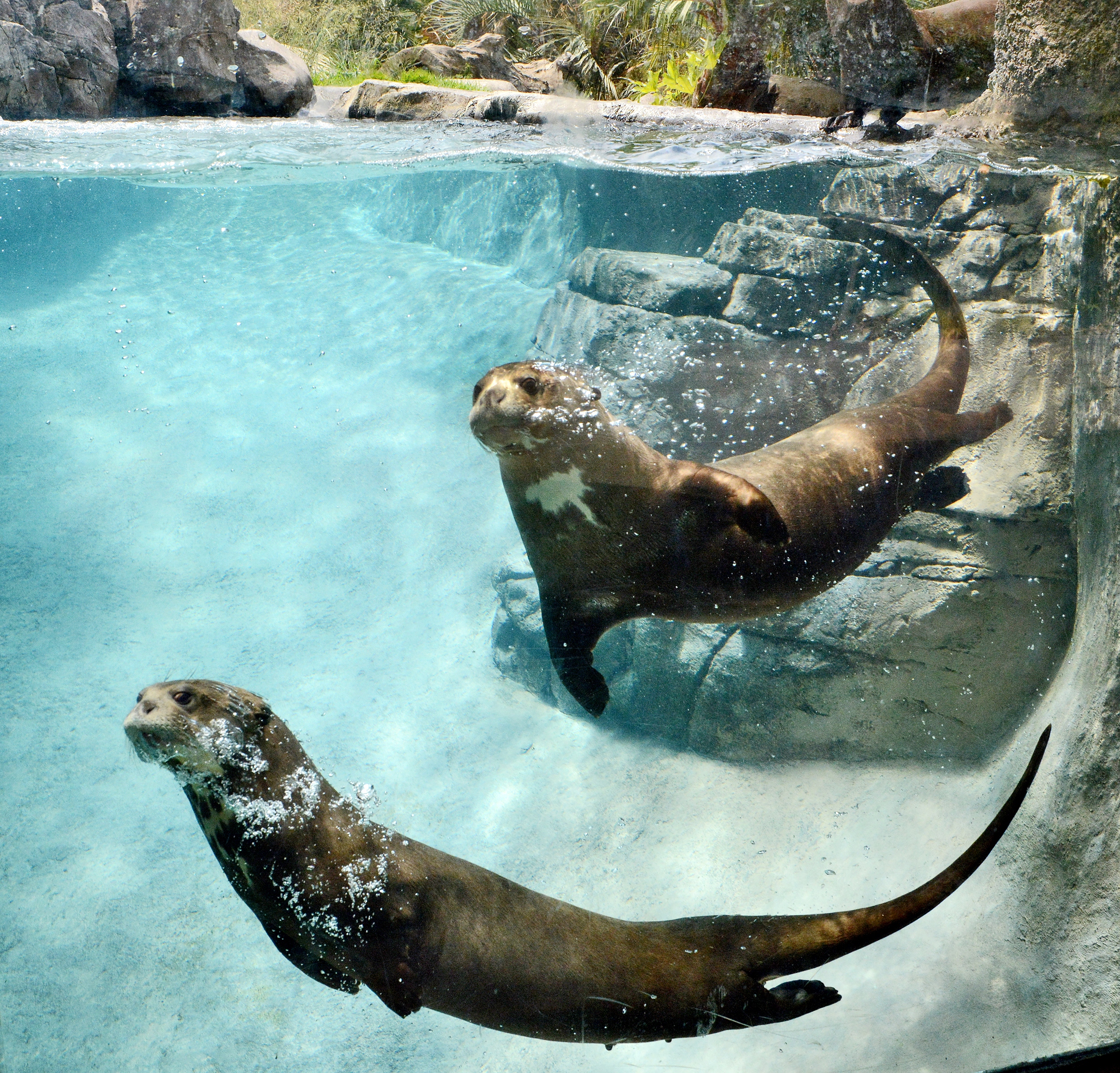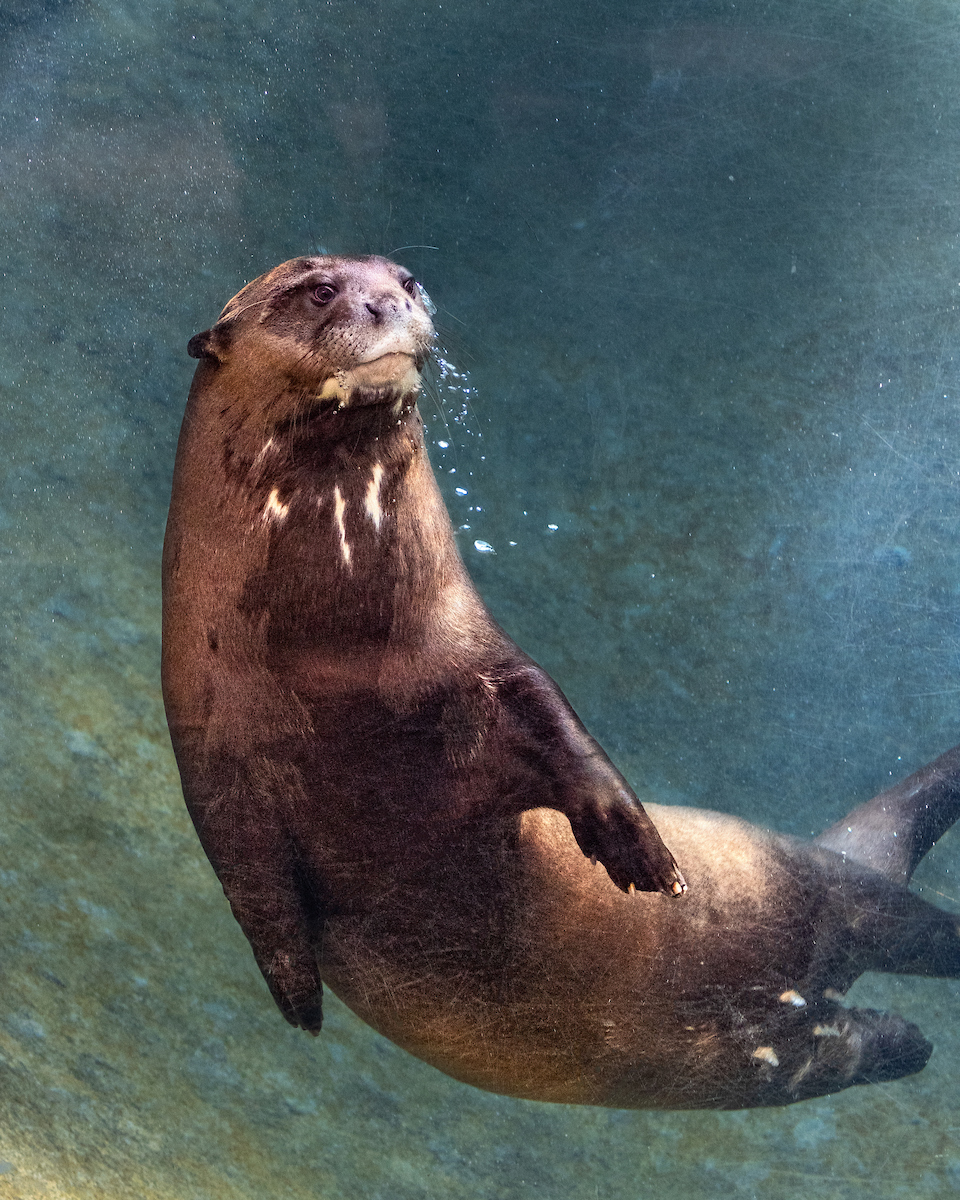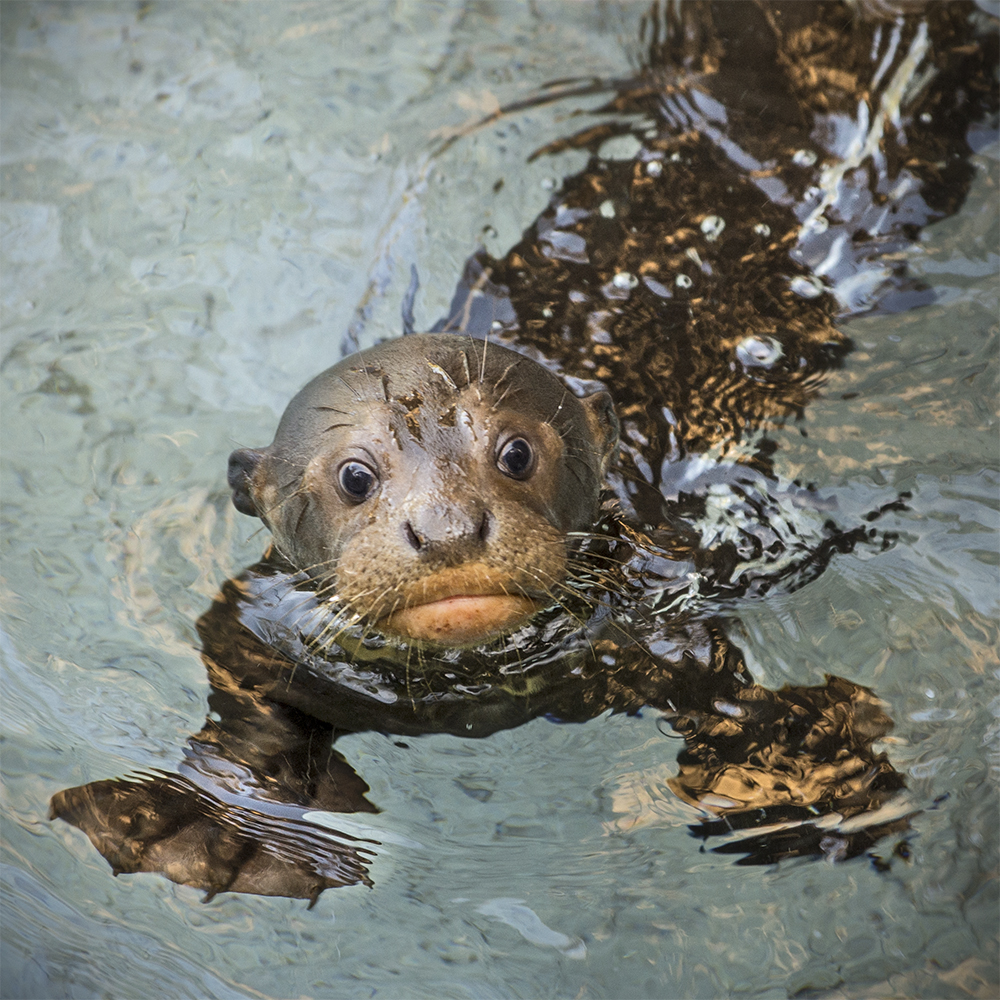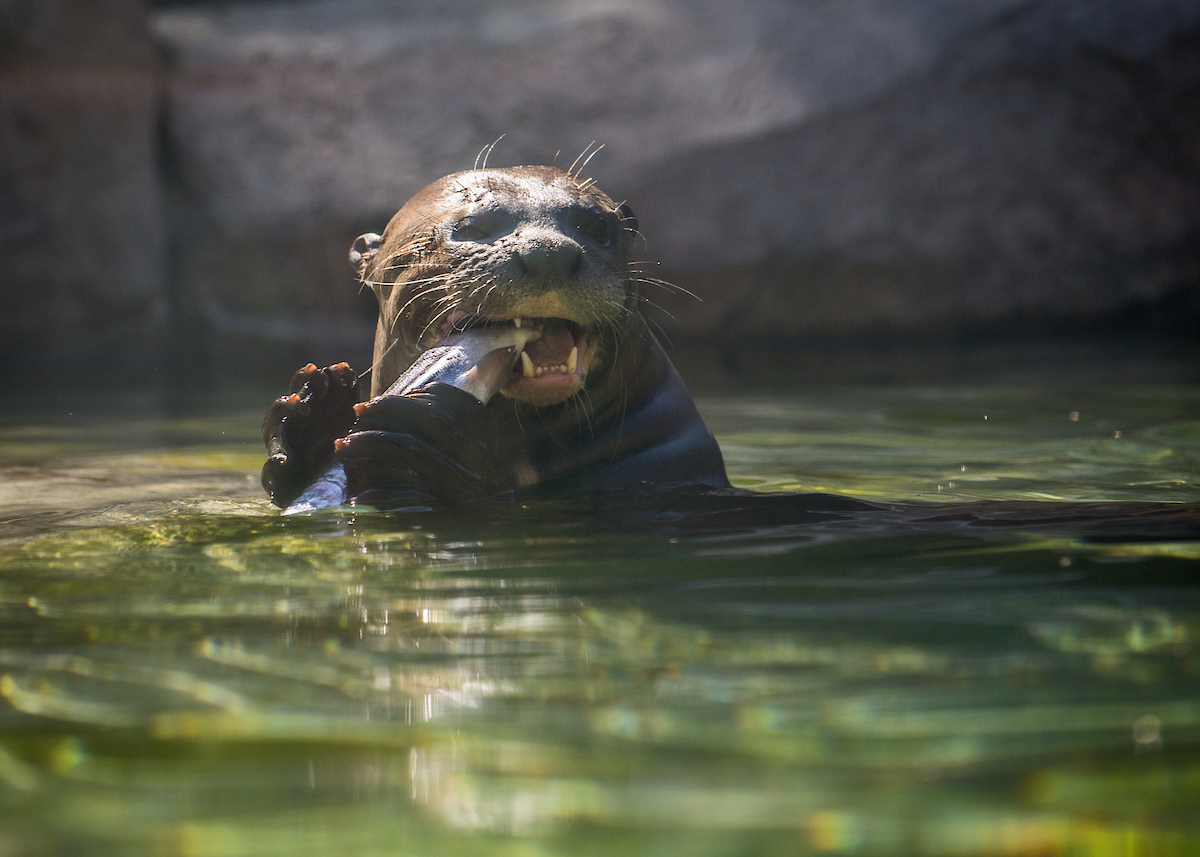About
In South America, giant otters are known locally as lobo del rio or the river wolf. They are the largest otter species, growing up to six feet long. They have a voracious appetite and can consume between 6 and 10 pounds of fish a day. Giant otters live in family groups consisting of two parents and their immature offspring. They set up camp along a riverbank, building burrows with simple tunnels and chambers. Communal toilet sites are set up around the perimeter of the camp—a method of scent marking that serves as a warning to other otters to stay away.
Gregarious and noisy, giant otters are active during the day. Calls include purring, squeaking, growling, and a low-frequency call that can be heard underwater. With webbed feet, a torpedo-shaped body, dense fur, and a strong, flat tail, they are built for life in the river. Their noses and ears close underwater as they dive up to 10 feet using large eyes and whiskers to locate prey.
The Zoo’s first successful giant otter births took place in July 2011. When the parents demonstrated difficulties in caring for the pups, Animal Care stepped in. For the first time in human care, infant giant otters were hand-reared from birth. Swimming lessons began at about two months of age. They were reintroduced to their parents and formed a family group. One of these hand-reared pups matured and went on to produce her own offspring and successfully raise them on her own—another first for any zoo. In the wild, giant otters are threatened by poaching, deforestation, habitat fragmentation, and water pollution from farms and mining operations.
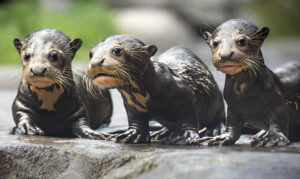
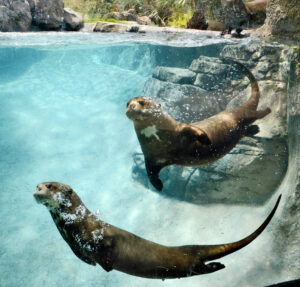

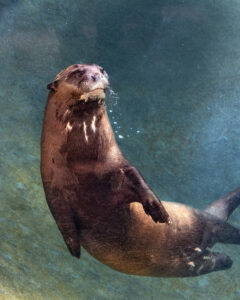

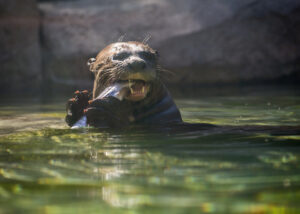
Status
The giant otter is classified as Endangered by the International Union for Conservation of Nature (IUCN). Hunting otters for pelts is now illegal, but laws against poaching are difficult to enforce in the areas where they live. They are also threatened by chemical pollution in the water. The runoff from farms, oil drilling and mining operations threatens them. Deforestation has degraded the otter’s habitat.
Habitat
Giant otters live on riverbanks near slow-moving water including streams, lakes, and swamps in the Orinoco, Amazon, and La Plata river systems of South America.
Diet
The otter’s primary food is fish, such as catfish and perch. They will also eat crustaceans, snakes, and small caiman.
Physical Characteristics
The head-body-tail length of an adult giant otter can be up to six feet. Adult males weigh up to 70 pounds and females are a little smaller. Fur is chocolate brown with cream-colored throat patches that are unique to each individual. Their lifespan in the wild is 10 to 13 years and up to 17 years in human care.
LOCATION WITHIN THE ZOO
You’ll find this animal in the Rainforest of the Americas. See Zoo Map.

